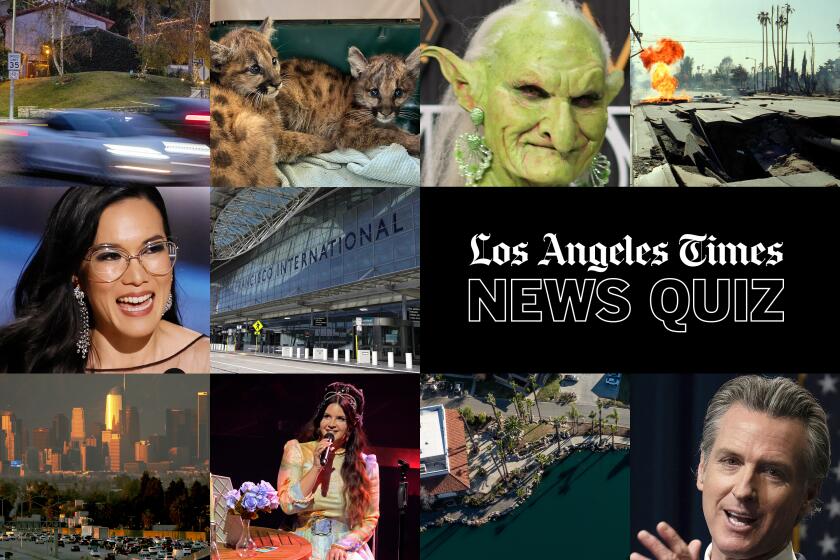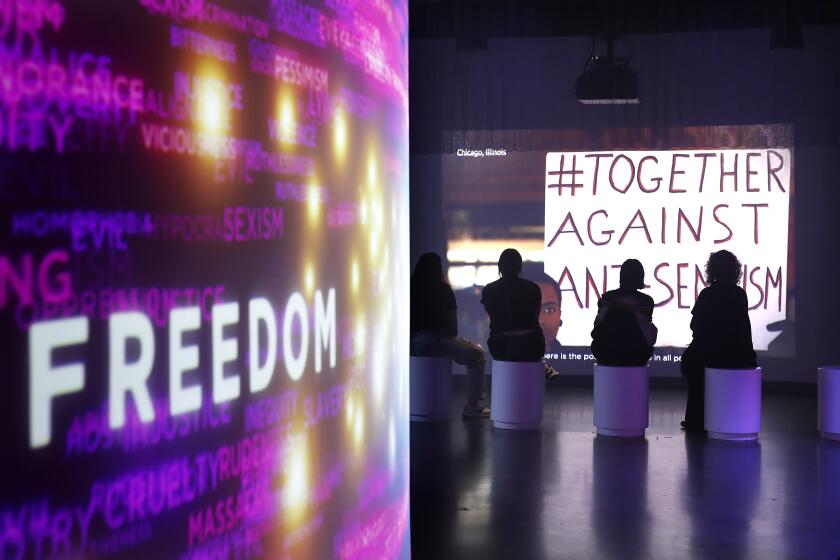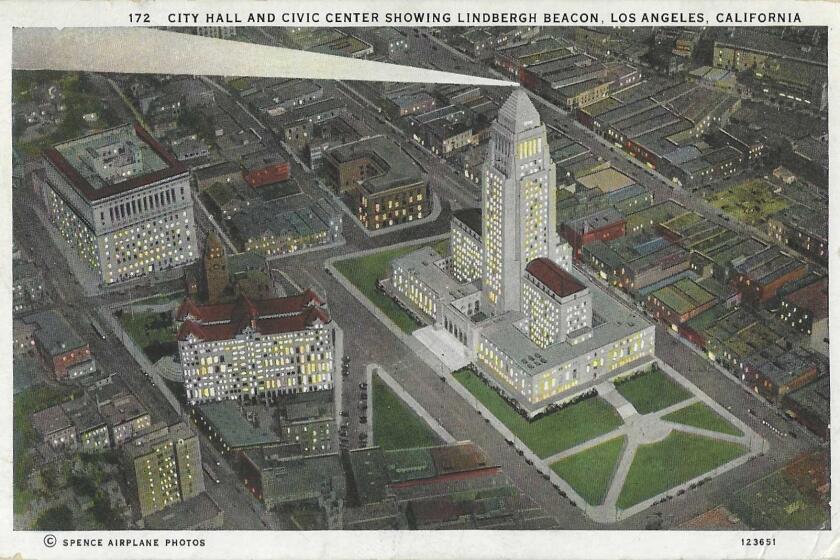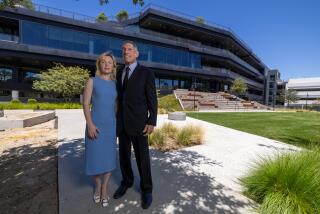The death — or not? — of L.A.’s shopping malls
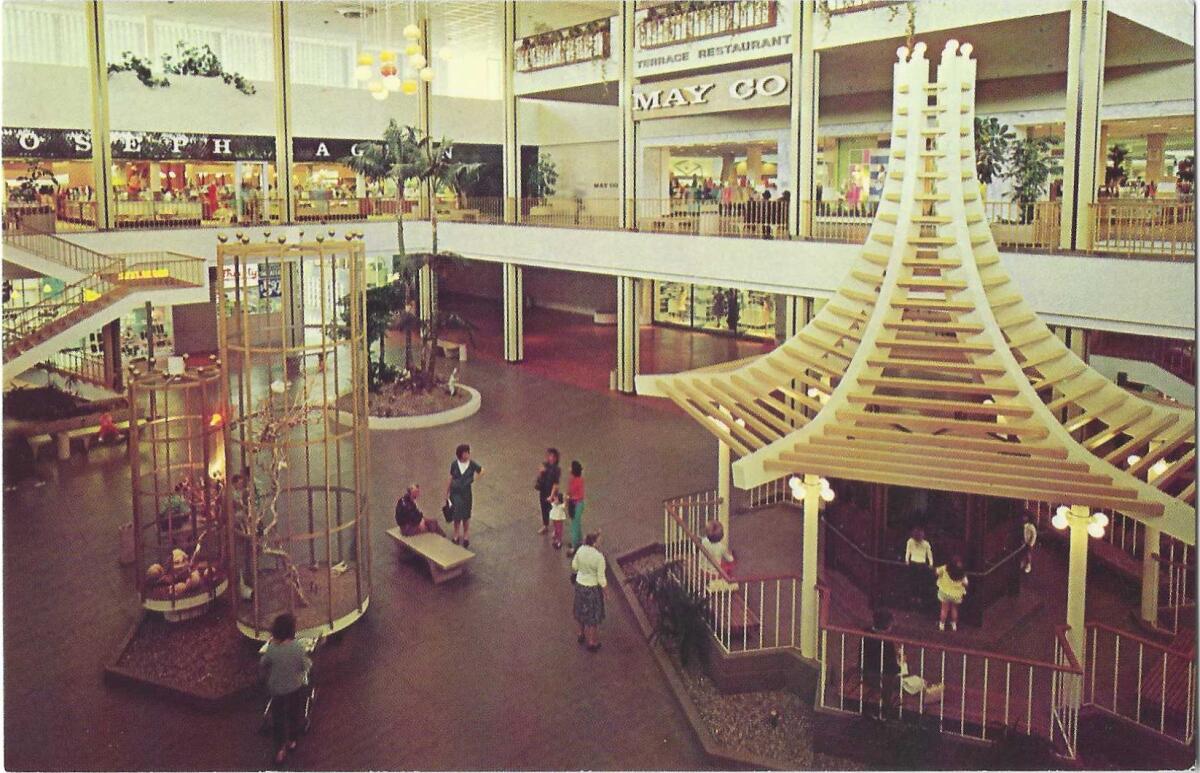
- Share via
Here’s a little something for your inner Agatha Christie: a civic murder mystery where a victim turns out not to be dead after all.
Damn, that was the spoiler. Oh well.
Corpse No. 1: America’s Main Streets, killed off 50 or 60 years ago by shopping malls.
Corpse No. 2: shopping malls, killed off by online shopping and by karma.
Yet by now, you’d have heard the rumblings, and the rumors, and what do you know: they are true. The mall — at least one renowned West L.A. mall in particular — is not fully dead.
Like many American malls, the Westside Pavilion had been borderline dead for years — “mostly dead,” like the diagnosis by Miracle Max in “The Princess Bride” — and now it is rebounding, hale and hearty, revived under a different name, UCLA Research Park, and a new, non-mercantile mission as a biomedical research center with ambitious to-do lists about cancer, pandemics, immunology, quantum science and engineering.
Get the latest from Patt Morrison
Los Angeles is a complex place. Luckily, there's someone who can provide context, history and culture.
You may occasionally receive promotional content from the Los Angeles Times.
The Pavilion’s mall incarnation opened in the mid-1980s. It was built on the site of the old Pico Drive-In, a single screen so unencumbered by nearby buildings that neighbors could watch the on-screen action. The modern pavilion had a 12-screen theater where many new indie movies used to open in the last couple of weeks of the year in order to qualify for Oscar consideration.
Along with many of its sister malls, the Westside Pavilion’s shopping incarnation dwindled away, and in 2019, Google signed a 14-year lease. Then came COVID, and Google never moved in. So the UC Board of Regents did, buying the former mall for its space and proximity to UCLA. The governor himself, Gavin Newsom, showed up this month to give it his blessing, and the state’s money.
This mall got lucky. Last year, the Capital One research operation fired off some dire bullet points:
- Of the nation’s thousand-plus malls, as few as 150 may still be around in eight years.
- The mall vacancy rate is 107% above the ordinary retail rate.
- In 2022, 2 million square feet of mall space was torn down.
How well do you know the news? Here are 10 multiple-choice questions based on stories that appeared in the Los Angeles Times over the last week.
The state of so many malls has been looking as desolate as the Main Streets that Americans abandoned for them. As for the future … well, read on.
The mall was the natural spinoff of the centrifugal force reshaping how Americans lived. After the disruptions and displacements of World War II, more Americans moved out of the close orbit of central cities into subdivisions, and shopping malls followed, sometimes becoming an artificial center to center-less suburbs.
The planned city of Lakewood and the mall there sprang to life almost simultaneously, in the early 1950s. The distinction between outdoor mall and indoor mall still leaves unanswered which mall was “first” — a market square in Lake Forest, Ill., puts 108 candles on its cake this year, and the first completely indoor mall opened in a Minneapolis suburb in 1956.
Well and good, if “first” is what you want.
In Los Angeles, we prefer laurels like “strangest.”
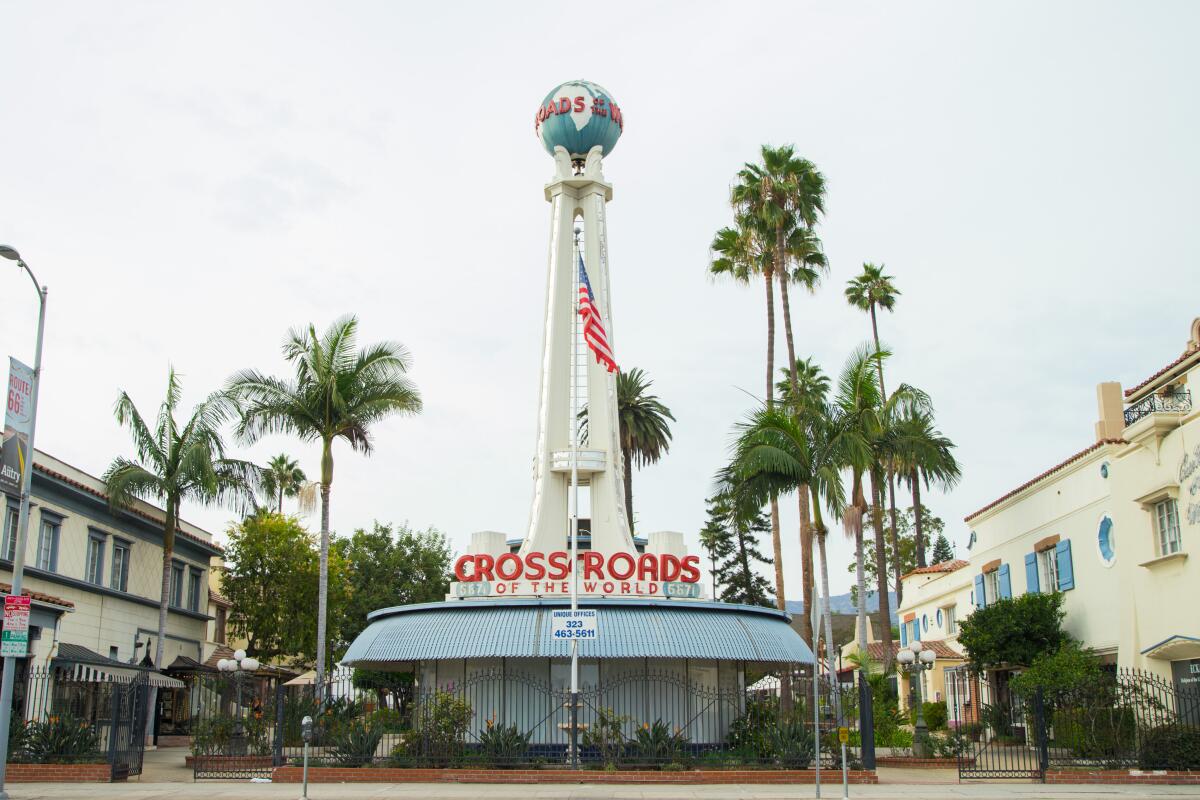
That may be Crossroads of the World, in Hollywood. This strollable outdoor mall opened in 1936, anchored by a column topped by an eight-foot rotating globe that makes the column look like an outsized trophy. Its architecture was a polyglot of building styles — kind of like Beverly Hills — but here’s the best part: It was noir, through and through.
It was built by the widow of a man who had been shot to death on that site five years before. Charlie Crawford was a hulking man with a thin, high voice and a manic Adam’s apple, and he was a sinister vice lord and City Hall shot-caller nicknamed “the Gray Wolf of Spring Street.”
He was killed in his office on the same site, shot by a judge candidate and former deputy D.A., Dave Clark. Crawford’s crony had been leaning on him to lay off his criticisms of the Crawford crime empire, and when Clark was invited to Crawford’s office to talk it over, he brought the gun he stopped to buy en route to the meeting.
He said Crawford drew on him first, so he shot Crawford and his crony in self-defense. Clark was acquitted. Five years later, the Widow Crawford commissioned the Crossroads as a fitting monument to her husband.
Antisemitism is as old as time. In Los Angeles, prejudice against Jewish people took on new and more public forms in the 1920s and 1930s and beyond.
Our other, storied shopping malls, are a lot more orthodox. Just a sampling: Northridge Fashion Center, the Grove, the Brea mall, the Glendale Galleria, the open-air Fashion Island in Newport Beach, Atlantic Times Square in Monterey Park, Baldwin Hills Crenshaw Plaza.
And then the outlet malls: Ontario, Camarillo and the Citadel, its usual collection of national brands stores grandiosely housed behind the fabulous Assyrian palace façade built nearly 100 years ago as the home of a tire manufacturer.
Anyone trying to re-create the 1980s mall experience would need the scents of Cinnabon and multiplex popcorn, the sound of someone at the keyboard in the organ store, food courts, frozen yogurt, free ear-piercing with purchase, mall Santas, ball pits and sing-alongs, Footlocker stores, fountains, Hammacher Schlemmer storefronts, a Bloomie’s or Penney’s or Macy’s, and vast acres of parking — enough, like the Puente Hills mall, for you and your DeLorean to experiment with time travel.
Maybe the seminal mall, storied in film and TV, was the Sherman Oaks Galleria in its 1980s glory days. The term “mall rat” was crafted in 1982 in the Chicago Sun-Times, per the Oxford English Dictionary. But the rat itself was surely born here, in the Valley, begotten of that species of teenagers caroming through the malls in flocks and packs.
Every teen mall scene of that epoch — “Bill and Ted’s Excellent Adventure,” and “Mean Girls,” and maybe the mall-est movie of them all, “Fast Times at Ridgemont High,” owes one to the Sherman Oaks Galleria, however its fortunes have altered.
Malls often displaced Main Streets and downtowns, but they did not replace them, and here’s why. A main street, a downtown, is a public place, where you might run into homeless people, or dogs being walked, or bird poop on a bus bench, or someone buttonholing passersby to hand out political pamphlets. That can happen when the public fills public places.
Inversely, a mall is a private space, where behavior is policed and regulated and enforced differently, more rigorously, and as such, a retreat not just from Main Street as a place but as a democratic, public space.
And it was enticing. So enticing. Outdoors is so … out of control. It’s never inclement inside the mall. The floors are well-tended and attract power-walking seniors. The bathrooms are kept clean and lights burning and trash collected. And homeless people and soapbox orators are made unwelcome, because not doing that would be bad for business. And business — the tax money from malls — can be a make-or-break matter for the people in the city halls in the old downtowns.
Not surprising, then, that there seems to be a bit of resurgence of shoppers to high-end malls. A few months ago, CNN reported on research that found “top-tier” malls were enjoying more patrons — the trend is especially pronounced among Gen-Z, The Times reported.
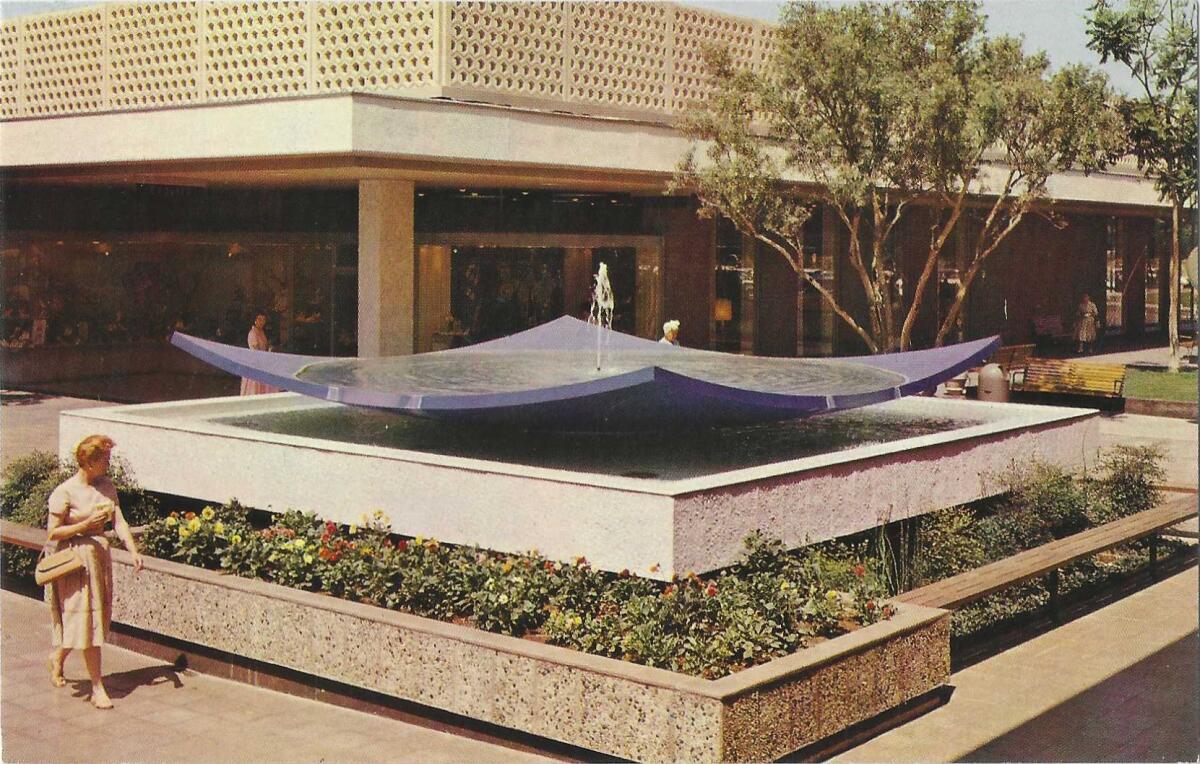
It’s not much — it may not be enough — but for phantom malls, there are already myriad ideas about what to do with them. Medical centers, apartment complexes, senior care memory centers, homeless enclaves, community centers, arts centers, indoor exercise and sports recreation sites.
The Laguna Hills Mall is getting gutted and re-done as a “walkable” community of apartments and condos, with a hotel and gym and offices and something most malls just didn’t have: a big, green, welcoming space.
There is one kind of mall that has never stumbled and fallen like its massive brethren. It’s the mini-mall, the strip mall, whose forebears began a century ago when developers realized that all those people driving all those new cars had to park in order to shop.
Los Angeles’ first documented smog attack — yes, we had smog attacks — was in 1943. We’ve been fighting the sources of pollution and the quirks of geography that trap it ever since.
The strip mall — originally called the pod mall, a name that never caught on — came in for resistance as they proliferated all over Southern California in the 1980s; “convenient eyesore” pretty well sums up the criticism. The parking was zip-in, zip-out easy; the malls offered opportunities to minority and immigrant businesses, like restaurants, that couldn’t afford major mall space; and by the mid-1980s there were about 3,000 of them in the state, often built on choice land once occupied by gas stations that had gone belly up.
Many people shopped, and some people complained. Traffic was a potential problem, and frankly, critics said the strip malls were just ugly. In April 1986, my veterinarian’s wife stood atop a historic building in Eagle Rock, defying the wrecking ball that would soon knock the place down to make way for a mini-mall. The day she spent in jail galvanized her neighbors, and soon, the city tapped the brakes on mini-mall proliferation.
That’s my second favorite strip mall story.
My favorite is about the two best friends who started the La Mancha development company, one of the biggest and canniest of the mini-mall builders. Their company logo — Picasso’s stylized silhouette of Cervantes’ delusional Spanish grandee — seemed to pop up every few blocks, all over town.
They had named their company aspirationally. They loved the musical “Man of La Mancha,” and they told The Times that the song “The Impossible Dream” really summed up their work, and their hopes.
Only later, they said, did they find out that “la mancha,” in Spanish, means a stain.
Los Angeles is a big, complicated place. Patt Morrison explaining how it works, its history and its culture in Explaining L.A. on latimes.com.
More to Read
Get the latest from Patt Morrison
Los Angeles is a complex place. Luckily, there's someone who can provide context, history and culture.
You may occasionally receive promotional content from the Los Angeles Times.
